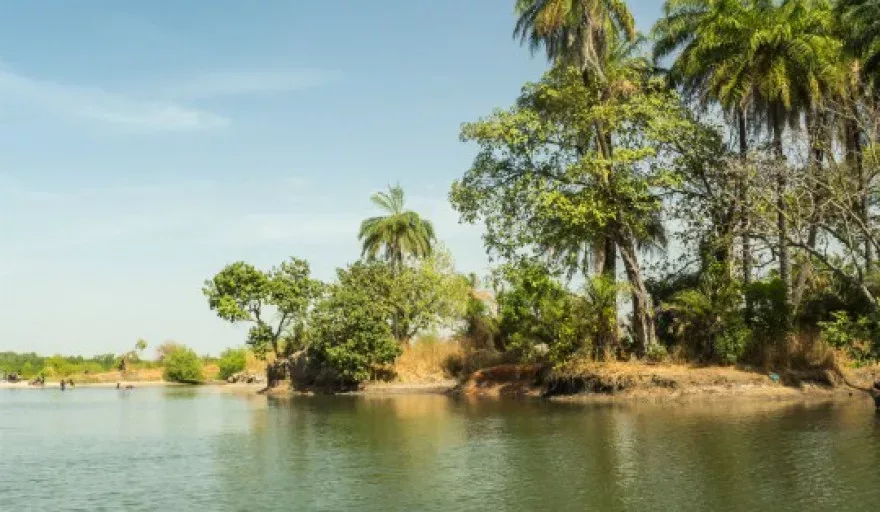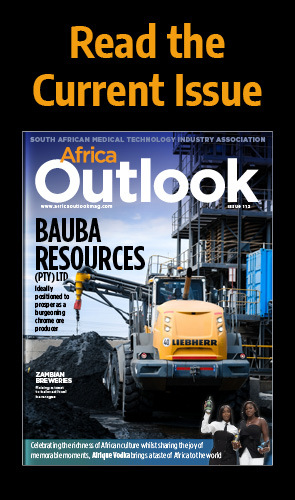Gambia may be the smallest country in Africa but it is certainly packing a punch in recent years as its reputation as a tourist hotspot gathers momentum.
Consequently having a knock-on effect on the country’s economy and individual business lines across areas of hospitality, cuisine, finance and travel, its GDP has consistently grown year-on-year for more than a decade now; and is showing no signs of slowing down as its accessibility and appeal continues to develop.
Engulfed on three sides by Senegal, its immediate access into West Africa has always affirmed its usefulness to the wider continent despite its diminutive stature, but it is the fourth side opening Gambia up to the Atlantic Ocean that holds most of the potential for the country moving forward.
Occupying the navigable length of the Gambia River valley and its surrounding hills, in total Gambia only enjoys 80 kilometres of coastline, but it’s the array of resorts, trade routes, business opportunities and paradise views that are packed into this stretch that have contributed most significantly to the country’s recent rise to global prominence.
Inevitably, the majority of tourists visit Western Gambia – the Atlantic facing region – and Upriver Gambia – the rest of the highly vegetated country – for the weather and temperatures between November and May (dry season) but as recognition grows, so too does the diversity of Gambia’s appeal, and the business travel sector is thriving as a result.
FACTS AND FIGURES
- Languages: English
- Capital city: Banjul
- Area: 10,689 kilometres
- Population (2013): 1.8 million
- GDP (2015): $3.5 billion
- Currency: Dalasi (GMD)
- Time zone: UTC+0 (GMT)
- Dialling code: +220
- Internet TLD: .gm
- Climate: Tropical
THE BUSINESS END
The majority of both leisure and business-related visits remain from Northern Europe with the UK and Scandinavia in particular being lured to West African shores in search of affordable alternatives to traditional Spanish, Italian or Greek summer holidays.
Gambia has responded in kind with many charter and holiday operators capitalising on the opportunity through affordable airfares and improved accommodation options.
But it certainly isn’t to say that tourism has revived a sinking economy. Again, for a small nation, it was always sustainable thanks to its well-run farming, fishing and agriculture-related industries. Its liberal, market-based economy has always been suitably humble but successful, and the complementing area of tourism is simply a case of diversification and strengthening rather than salvaging.
Since then, between 2006 and 2012 alone, the economy grew annually at a pace of five-six percent of GDP. And while that figure remains consistent and tourism has played a big part in maintaining these impressive statistics, it is still largely agriculture that lays the foundations for new revenue streams to thrive. Traditionally, as much as 30 percent of the country’s GDP is agriculture-driven with 70 percent of the labour force emanating from the same domain; both highlighting Gambia’s internal strengths as a stable economy, but also how exciting its recent tourism infrastructure evolution has been and continues to be.
OUT AND ABOUT
The smiling coast of West Africa, as it is known, doesn’t refer to the shape of Gambia or anything overtly philosophical, but simply the friendliness of its people. And this is the main take-home report of anyone to have visited the country’s shores.
Inevitably, a personable nature goes hand-in-hand with the tourism-related areas of business that are thriving in the country at the moment, but it’s when you’re exploring the wilderness on your own and simply taking in the local cultures and atmospheres that you become endeared to the nation and its inhabitants.
And what this achieves more than anything is a calming welcome to a country that would be stunning regardless of people, resorts and tour guides anyway.
Coast side, its sun and surf all the way, but further inland a plethora of natural beauties, rolling mountains, rainforests, wildlife reserves and archaic treasures are there to be found. And given the small scale of Gambia, it’s not as difficult to take in a bit of each dimension as you’d think.
Without too much international influence, the best thing about Gambia is its indigenousness, whether that’s encouraging local delicacies, demonstrating Gambian history, or preserving native wildlife. And during your time in the country, it’s highly advised you experience all of the above.
Abuko Nature Reserve, Kachikally Crocodile Pool, Sanyang Beach and the Chimpanzee Rehabilitation Project are just a select few examples to sample on the nature front; the James Island ‘Roots tour’ is a poignant reflection on centuries past; and finally, you can head back to an increasing number of four and five-star hotels and resorts, chief among them being Kololi Beach Resort and Tendaba Safari Camp.
More from Africa Outlook
OUTLOOK RECOMMENDS
“Gambia offers a cheaper alternative than the Caribbean destinations and there are 48km of unspoilt white sandy beaches which have [still] yet to experience any significant tourist development.” – Gambia Travel and Tourism
Hospitality
Kololi Beach Resort defines itself as the perfect holiday location “where time stands still” as an idyllic paradise resort located on the smiling coast of West Africa. Set across 24 acres of pristine green space, its beachside setting ensures ultimate comfort, relaxation and stunning views at all times, while its ever-improving facilities makes it the perfect getaway for business clientele too.
Nature
Chimpanzee Rehabilitation Project
Culture
More from Africa Outlook
Leisure
Food & Drink
TRANSPORT LINKS
Given the country’s growing popularity from further afield in recent times, it is perhaps no surprise that it’s relatively easy to gain access to the nation from a visa perspective; most EU member states even being able to enter the country for an initial 90 days visa-free.
No matter where you’re departing from though, you will likely arrive into Banjul International Airport in the capital city of Banjul. Primarily catering for Europe and West Africa, from arrival onwards, there are numerous options in terms of internal transport during your stay but it is probably the last remaining infrastructural challenge that exists in Gambia.
For most, rural excursions, improvised journeys and quirky tours are part of the charm of the whole experience but it’s also worth making yourself familiar with these little security and cost nuances prior to visiting.
For instance: public transport costs often vary depending on whether you end up in a shared taxi or an individual one but you need to tell the driver which you want, otherwise they may just choose the more expensive option for you; the terrain makes 4X4s a must if you want to get by under your own steam; and back to the cab challenge again – if you can – always choose yellow taxis over green ones.
For everything else and especially on the tourism front, guided tours are usually the way to go.
LANDMARK ATTRACTIONS
River Gambia National Park
“The national park was established in 1978 and is made up of a complex of five islands that lie on the river in the Central River Division (Region) about 300 kilometres upstream to the southwest of Kuntaur and downstream of Janjangbureh, Georgetown. The five islands are collectively known as Baboon Islands which cover an area of approximately 1,445 acres. An interesting place to visit is the Chimpanzee Rehabilitation Camp (CRC) which lies on the banks of the river.” – Gambia Travel and Tourism
Wide Open Walls, Kubuneh
“Wide Open Walls was launched in 2010… The basic idea was to turn some of the village of Kubuneh within the Ballabu area into a living art exhibition. After speaking with Eelus, a street artist of world renown, [founder] Lawrence Williams suddenly had himself a curator and the first Wide Open Walls project was born. The following October, 8 street artists from around the world came to The Gambia and over the course of two weeks, turned the village of Kubuneh into a living art project.” – The Gambia Experience
Wassu Stone Circles
“The ancient Wassu Stone Circles, in Gambia, are located around Wassu in the Central River Region and are believed to be burial mounds of Kings and chiefs in ancient times more than 1,200 years old… This sacred site was declared a National Monument in 1995 and on 21 July, 2006, 93 monuments in the Senegambia region (Sine Ngayène, Wanar) were declared by UNESCO to be a World Heritage Site.” – Gambia Travel and Tourism



























